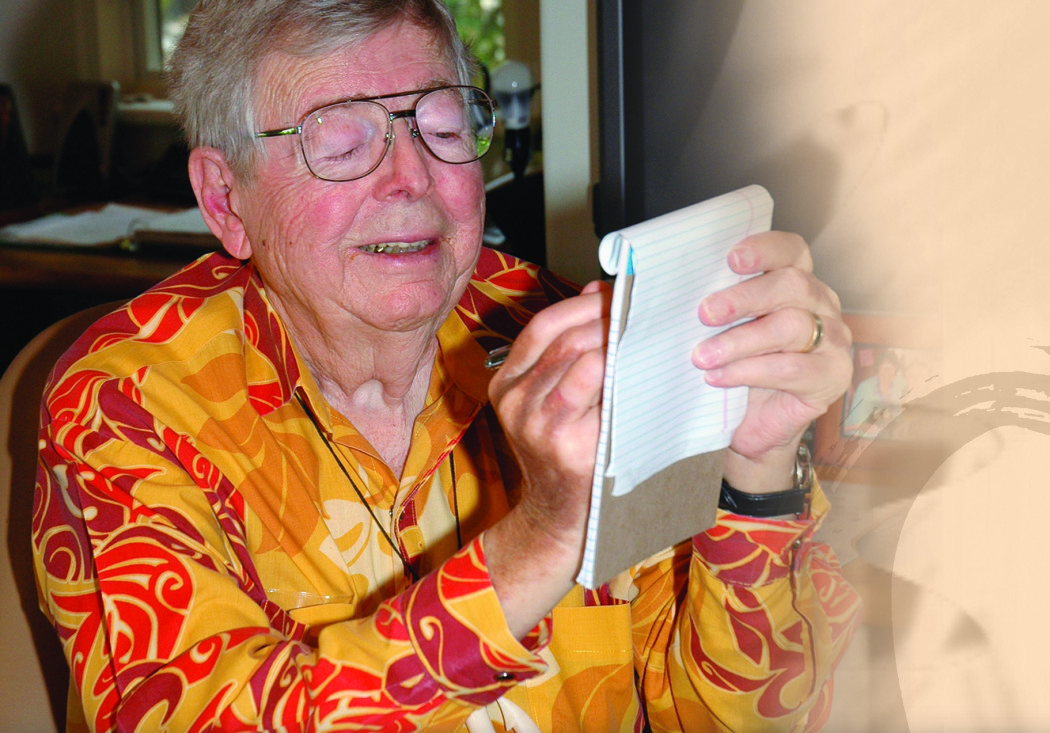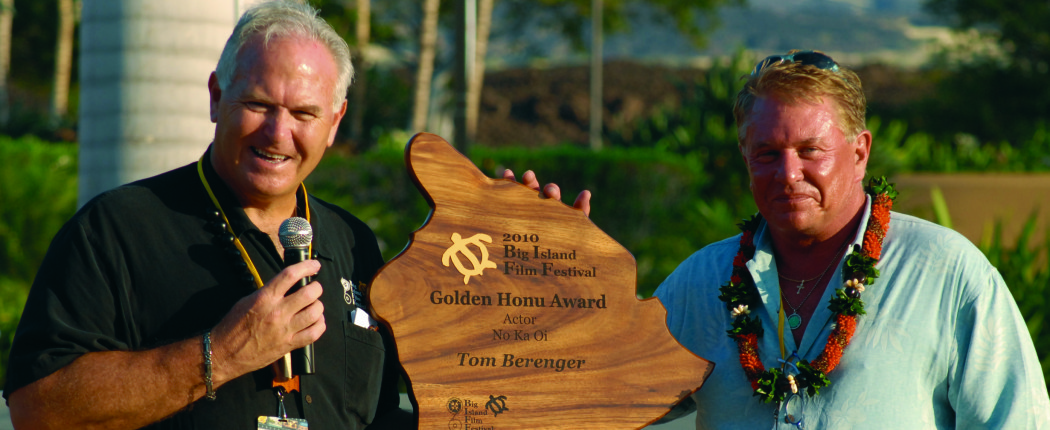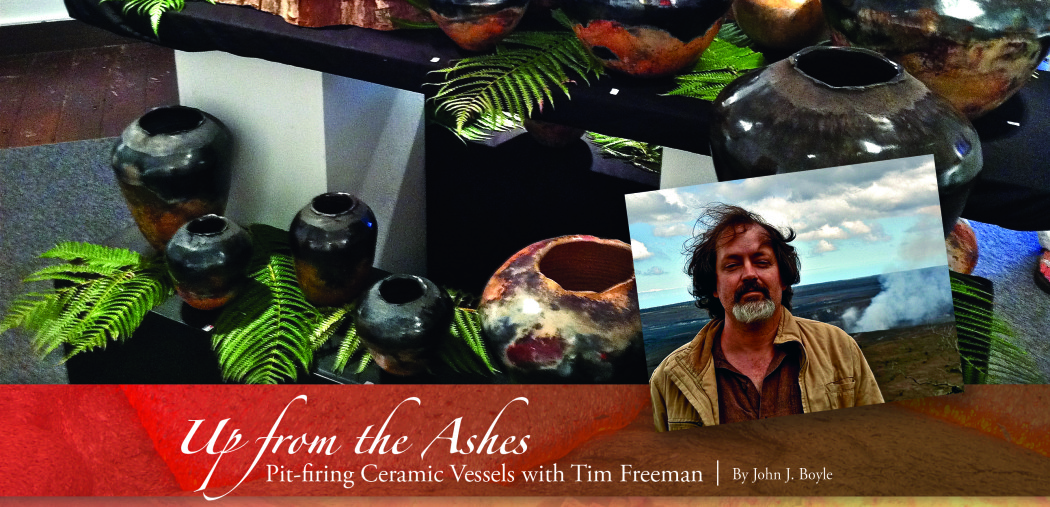
Then & Now: Pu‘uhonua O Hōnaunau
 Second in a series of profiles on Hawai‘i Island National Parks
Second in a series of profiles on Hawai‘i Island National Parks
By Robert Oaks
Traditional Hawaiian society was regulated by a series of rules—kapu—the violation of which led to severe punishment, often including death. Examples of violating a kapu included eating forbidden food, transgressing against a chief, engaging in a crime or defeat in war. A person guilty of such an offense, however, could escape the penalty by fleeing to one of several pu‘uhonua (commonly, but somewhat misleadingly called a “city of refuge”), which were scattered around the islands. Once there, regardless of guilt or innocence, he could be absolved of his crime by a priest and allowed to return home.
Pu‘uhonua o Hōnaunau National Historical Park, on the South Kona coast of Hawai‘i Island, is one of the most significant archeological and historical sites in the entire state of Hawai‘i. The park consists of two distinct sections—a pu‘uhonua, or place of refuge, and a royal compound—separated by a massive stone wall built on top of a lava flow from Mauna Loa Volcano.
Open to Hōnaunau Bay on one side, the pu‘uhonua is partly enclosed by the 1,000-foot-long lava rock wall, approximately 17 feet thick and 10 feet tall. Built around 1550 without mortar, the basalt blocks were fitted together with the smoothest sides facing outward. Small stones filled in the gaps of the larger stones, some of which weighed more than 1,000 pounds. The sheer size of the wall and other structures at Hōnaunau, possibly built in just a matter of a few days, demonstrate the ability of Hawaiian ali‘i to coordinate and control large numbers of laborers.
In addition to the pu‘uhonua, on the mauka side of the wall was the royal enclosure, home to high chiefs of Kona for many generations and ancestral home of the Kamehameha dynasty. This entire portion of the park was kapu to commoners, who could not walk through the area or even cast their shadows without risking death. Reaching the asylum of the pu‘uhonua, therefore, required swimming across Hōnaunau Bay.
Separating the two areas, and providing its sacred atmosphere was the Hale o Keawe, a thatched roof temple and mausoleum containing the bones of 23 deified, high-ranking chiefs, protecting the sanctuary of the spot.
Hale o Keawe was built for Keawe-i-kekahi-ali‘i-o-ka-moku, Kamehameha’s great grandfather, probably sometime between 1720 and 1740, though some scholars suggest it might have been built nearly 100 years earlier. The pu‘uhonua itself, probably dating from 200 to 300 years before Hale o Keawe, included two additional, older temples.
The first of these, significantly larger than Hale o Keawe, was the ‘Ale‘ale‘a heiau built in several stages over a period of 200 years or more, beginning as early as the 1000s. Its massive foundation (127 by 60 feet) can still be seen within the pu‘uhonua. Nearby is the site of an even older and even larger structure, known simply as the “Old Heiau.” Destroyed by a series of pre-historic tsunami, its name is long forgotten.
Hale o Keawe was a state heiau, surrounded by a palisade and protected by wooden images (ki‘i). The bones inside were venerated and watched over by a hereditary guardian. There were images, altars, and a refuge pit, but no bones of women, since it was not a family burial site. The deification of the chiefs, in a ceremony that most likely included human sacrifices, ensured the sanctity and inviolability of the pu‘uhonua.
The first European visitors to Hale o Keawe were British Lt. James King and several other officers from Captain James Cook’s ships anchored at nearby Kealakekua Bay four miles to the north. Visiting sometime before Cook was killed in February, 1779, they found “ludicrous and some obscene idols, like the Priapus of the ancients.” Indeed, such anatomically correct idols, according to the ship’s surgeon Dr. David Samwell, “would offend the Ear of Modesty
to recount.”
Not all objects were offensive, however. King described one that they saw inside the Hale as a “black figure of a man, resting on his fingers and toes, with his head inclined backward; the limbs well formed and exactly proportioned, and the whole beautifully polished.” This 26-inch long relic is now in the British Museum in London. It has mother-of-pearl eyes, human teeth and short, black hair attached to the top of the head.
The Hale o Keawe was carefully maintained down to the end of Kamehameha’s life (1819). Shortly after he died, his son and successor, Liholiho (Kamehameha II), abolished the kapu system, making the Hale and the pu‘uhonua itself largely irrelevant. Even so, the association with Kamehameha and the ancestral royal bones kept the site from being desecrated, as were most other sites associated with the old religion.
In 1823, four years after it was abandoned, the American missionary Rev. William Ellis visited the site and misleadingly called it a “city of refuge.” He and other early European visitors thought the pu‘uhonua similar to Jerusalem and other Biblical cities of refuge, overlooking the fact that Hōnaunau was by no means a “city” and that guilt or innocence had no bearing on the granting of refuge and pardon.
Despite the confusing name, however, Ellis did provide the first detailed description of the pu‘uhonua, including a drawing of it in his book. He recognized its significance and appreciated the clemency aspect, finding the place a nice contrast to all the “heathen” temples and altars that he found elsewhere on the island.
Two years after Ellis’s visit, the crew of the HMS Blonde also visited the Hale. Under the command of Lord Byron (cousin and successor of the poet), the Blonde had returned the bodies of King Kamehameha II and Queen Kamamalu from London, where they had both died from measles on an unsuccessful journey to meet with King George IV. The ship then visited several sites in the islands, including Hilo, Mauna Loa Volcano, and Kealakekua Bay, before returning to England.
Lord Byron and several of his crew members visited Hale o Keawe, accompanied by the island’s Governor Kuakini. Since the new King Kamehameha III was a minor, the kingdom was ruled by co-regents: Kamehameha’s wife Ka‘ahumanu and the effective prime minister Kalanimoku. Those two, both Christian converts with little interest in the idols of the old religion, gave Byron’s crew specific permission to remove any articles they wanted from the temple.
The ship’s naturalist, Andrew Bloxam, described the same black figure of a man that Lt. James King had described nearly half a century earlier. Bloxam believed that the figure was a kind of stool upon which “all the Kings when they entered the Temple used to rest themselves before sacrifice.” And that is how the figure ultimately ended up in the British Museum.
Governor Kuakini and another local chief who accompanied the British that day, silently allowed the looting of the temple, but they did prevent the removal of the bones. The royal remains were moved first in late 1828 or early 1829 to caves at Kealakekua Bay, and subsequently in 1865 to the royal mausoleum at Nu‘uanu in Honolulu. The then-empty Hale gradually fell into disrepair until restored by the National Park Service in the 1960s.
Though Hale o Keawe is the most important and recognizable structure in the park, there are many other significant objects as well. Within the pu‘uhonua side of the park, these include:
- The Keoua Stone, named after Kamehameha’s father, who supposedly slept on the 13 ½-foot long stone, shaded by a coconut leaf canopy supported by posts inserted in holes carved in the rock.
- The Ka‘ahumanu Stone, named after Kamehameha’s favorite wife. According to legend, after the couple quarreled, Ka‘ahumanu fled to Hōnaunau and hid beneath the rock. Her barking dog revealed her hiding place and the pair reconciled. Mark Twain, who visited the site in 1866, scoffed at the story: “for Ka‘ahumanu was 6 feet high—she was bulky—she was built like an ox—and she could no more have squeezed herself under that rock than she could have passed between the cylinders of a sugar mill.” But then perhaps she wanted to be discovered.
- Konane stone, a two by two-and-one-half-foot basalt block with shallow holes of nine by 11 rows marking the positions of black and white pebbles used in this checkers-like game. The stone itself is called a papamū.
- Hale o Papa, also called Heiau no na Wahine (the women’s temple) may have been either a temple or simply a place of seclusion for high-ranking women. Only the small (25 by 30 feet) stone platform exists today near the middle of the south wall.
There are fewer structural remains within the royal grounds of the park, but several natural formations provide a guide to the past. Keone‘ele Cove, the former royal canoe landing, once surrounded by grass huts, is now populated by honu, the green sea turtles so popular with visitors. The nearby Heleipalala fish pond, fed by an underground spring, once held the food of the ali‘i. There is also a reconstructed canoe house (hālau) within the royal compound, which contains some ancient koa wood canoes, still in remarkable condition.
Because of the historical significance of the area, plans to acquire lands to establish a national park began in the late 1940s. In July 1961, the City of Refuge National Historical Park was established, adopting the name that the Rev. William Ellis bestowed more than a century earlier. In 1978, at the request of the Association of Hawaiian Civic Clubs, however, the name was changed to the more appropriate Pu‘uhonua o Hōnaunau National Historical Park.
Today more than 400,000 visitors come each year to enjoy the scenic and historic wonders of the 400-acre park. ❖
For Further Reading:
Cordy, Ross. Exalted Sits the Chief: The Ancient History of Hawai‘i Island. Honolulu: Mutual Publishing, 2000.
Greene, Linda Wedel. “A Cultural History of Three Traditional Hawaiian Sites on the West Coast of Hawai’i Island.” http://www.cr.nps.gov/history/online_books/kona/history.htm. National Park Service, 1993.
James, Van. Ancient Sites of Hawai‘i: Archaeological Places of Interest on the Big Island. Honolulu: Mutual Publishing, 1995.
Kirch, Patrick Vinton. Feathered Gods and Fishhooks, An Introduction to Hawaiian Archaeology and Prehistory. Honolulu: University of Hawaii Press, 1985.
Legacy of the Landscape: An Illustrated Guide to Hawaiian Archaeological Sites. Honolulu: University of Hawai‘i Press, 1996.
National Park Service, “Pu‘uhonua o Hōnaunau National Historical Park”, http://www.nps.gov/puho
Oaks, Robert F. Hawai‘i, A History of the Big Island. Charleston, S.C.: Arcadia Publishing, 2003.


